Analytics
Product safety and highest quality thanks to modern analytics
Our services for you
Quality control for your products safety
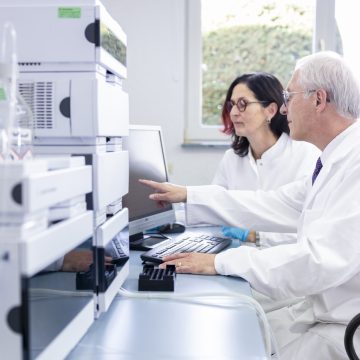
Chromatographic analytics
State-of-the-art chromatographic analysis with accredited test methods for quantitative control and labeling of the valuable components of your cosmetic products.
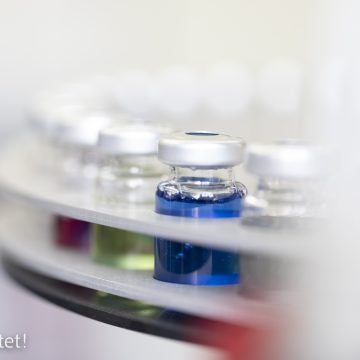
Wet chemical and physical analysis
Wet chemical and physical test methods for quality control of your cosmetic products and for compliance with the European Cosmetics Regulation.
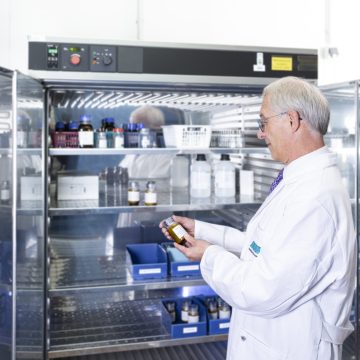
Stability testing of cosmetic products
We test the stability of your products. Market-ready cosmetics need to be stable under various environmental conditions.
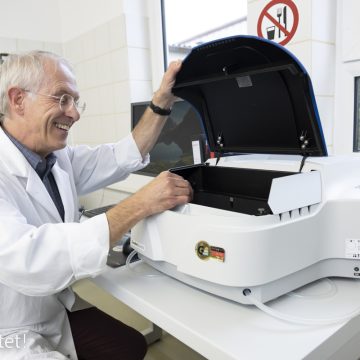
In-Vitro-irritation testing
Animal-free in-vitro test methods for determining the irritation potential of cosmetic ingredients and finished products.
We analyse your cosmetics
According to the EU Cosmetics Regulation 1223/2009, the packaging of cosmetic products must contain a declaration of the ingredients. Some of these ingredients may only be present in the finished product up to a certain concentration, which must be verified.
Special claims can also be made with regard to certain ingredients, the accuracy of which must be corroborated in order to avoid consumer deception.
In order to give our customers even more confidence in the quality of our analytical services, our analysis laboratory (former Institut Dr. Schrader Ancopharm) is accredited since 2016 by the German Accreditation Body (DAkks).
Of course, in addition to offering routine examination parameters for cosmetic products, we will gladly develop appropriate methods to meet your specific needs.
- Accordance with the European Cosmetic Regulation in respect of the statutory thresholds of the allowed substances in finished products
- Correctness of the advertising statements
- Quantitative monitoring of quality determining constituents
- Determination of UV-filters
- Determination of preservatives
- Determination of skin care substances
- Determination of selected vitamins
- Determination of physical and chemical parameters
- and much more
In cooperation with an accredited microbiology laboratory, we furthermore offer:
- Preservation challenge test
- Total germ count
- UHPLC
- HPTLC
- Karl Fischer Titration
- UV-photometer
- Enzyme-Test-Kits
- Selective sample preparation
- Stability test (temperature/time) / stress test
Determination of stability parameters
Newly formulated or reformulated cosmetic products have to fulfil certain stability criteria that are specified in the Cosmetics Directive. These stability parameters are measured by means of (long-term) stability tests.
Storage stability tests are performed in heating and cooling cabinets at different temperatures and for different storage times.
After predefined test times the relevant stability parameters are determined by means of physico-chemical and instrumental analytical tests.
If so desired, the suitability and compatibility of packaging materials can be tested.
Example of a storage stability test design:
Number of stored lots:
3
Storage time:
6 month
Storage temperatures:
4°C, 20°C (25°C, room temperature), 40°C
Test periods:
T0, T1, T3, T6
Test parameters:
- Organoleptic parameters
- Formulation parameters
- Physico-chemical parameters
- Quantitative analysis
- Packaging material compatibility
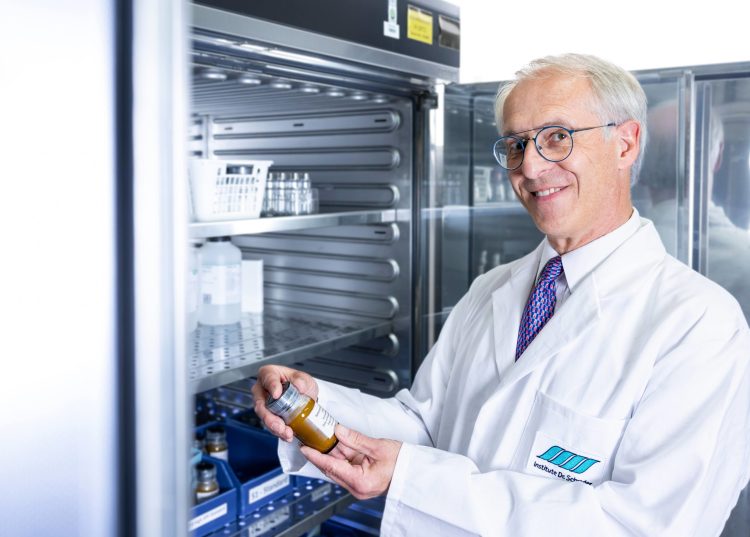
to determine irritation potential
Because of the animal protection regulations from the year 2013, animal experiments are permanently banned in the European Union for testing cosmetic ingredients and finished products.
To ensure the safety of new finished products and for selection of raw materials the in vitro test method described below is used routinely to determine the irritation potential:
1. Chorioallantois membrane test on incubated hen’s eggs (HET/CAM-Test) for evaluation of eye irritancy of finished products and raw materials (INVITTOX Protocol # 47/96).
to determine irritation potential
Because of the animal protection regulations from the year 2013, animal experiments are permanently banned in the European Union for testing cosmetic ingredients and finished products.
To ensure the safety of new finished products and for selection of raw materials the in vitro test method described below is used routinely to determine the irritation potential:
1. Chorioallantois membrane test on incubated hen’s eggs (HET/CAM-Test) for evaluation of eye irritancy of finished products and raw materials (INVITTOX Protocol # 47/96).

In-vitro-test methods
to determine irritation potential
Because of the animal protection regulations from the year 2013, animal experiments are permanently banned in the European Union for testing cosmetic ingredients and finished products.
To ensure the safety of new finished products and for selection of raw materials the in vitro test method described below is used routinely to determine the irritation potential: In-vitro-test methods to determine irritation potential:
1. Chorioallantois membrane test on incubated hen’s eggs (HET/CAM-Test) for evaluation of eye irritancy of finished products and raw materials (INVITTOX Protocol # 47/96).


